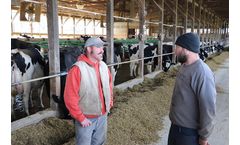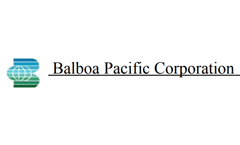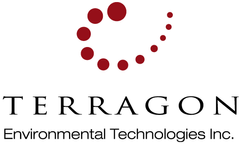Cow Disease Articles & Analysis
20 articles found
Types Of Smart Sensors For Agriculture Rapid social development, climate change, reduced rainfall and increased demand for food have all had a big impact on agriculture. This has had a negative impact on traditional farming practices. It is understood that we will be equipped with smart sensors in the agricultural sector.The current situation wants farming to become more “smart” by using modern ...
Background Jerry Volenec and his wife, Jennifer, farm 1,000 owned and rented acres and milk 350 Holstein cows in a limited liability company with his parents, Charles and Marilyn Volenec, near Montfort in Grant County, Wis. Jerry is the fifth generation of his family to farm at Hardscrabble Farms. In 2000, the Volenecs were milking 130 cows in a double- eight milking parlor. By 2010, they had ...
BAA Requirement: The Mobile system needs to be able to decontaminate and decompose 0.5 million pounds per 24 hour period of wet or dry animal and plant material that may contain some inorganic debris. The emissions, effluent and residue from this process must be environmentally safe and suitable for disposal in commercial landfills or waste treatment systems. The system must be able to ...
MAGS: An Ideal Technology for the Treatment of Regulated Garbage Terragon’s Micro Auto Gasification System (MAGS) is now USDA approved as a new technology for handling regulated garbage. The commonly employed technologies including USDA/APHIS approved incinerators, sterilizers and grinders only offer sterilization and volume reduction benefits. Aside from the benefits of sterilization and ...
The dangers of Mad Cow Disease! For the first time in over ten years Bovine Spongiform Encephalopathy (BSE) better known as Mad Cow Disease has reared its head again in the UK with cases recorded on a farm in Aberdeenshire, Scotland this October. ...
One possible approach to reduce market vulnerability would be to move towards a New Zealand style producer-owned model.Keywords: bovine spongiform encephalopathy, BSE, Canada, USA, farm producers, risk management, trade, mad cow disease, market vulnerability, exports, government policy, market diversification, cattle ...
Bovine spongiform encephalopathy (BSE) emerged in the UK in the mid-1980s, and eventually spread to other countries, ultimately becoming a disease of global concern. Each BSE-affected country detected its first domestic case at different points in time, faced different internal and external challenge levels, and responded with different risk management policy actions. ...
Recent revisions to the OIE BSE risk classification attempt to improve the application of standards by categorising countries into two main risk groups – either controlled or negligible risk, based on surveillance of high risk animals and implementation of appropriate BSE control policies.Keywords: bovine spongiform encephalopathy, BSE risk levels, variant Creutzfeldt-Jakob ...
The paper first summarises the nature of prion diseases from a scientific perspective, and then presents an overview of the findings of an extensive set of country case studies, devoting special attention to the Canadian case. ...
A comparison of economic impacts and analysis of existing literature shows subsidy programmes did little to restore long-term stability or reduce market vulnerability to Canadian farm producers.Keywords: bovine spongiform encephalopathy, BSE, economic impacts, subsidy programmes, Canada, mad cow disease, beef producer compensation, market vulnerability, beef ...
Both countries have had a single imported case of BSE followed by multiple endemic cases of the bovine disease. Comparable risk management strategies have been put in place, such as a ban on the feeding of ruminant materials to other ruminants, a ban on the use of specified risk materials in human and animal feed, and targeted import policies designed to limit the possibility of ...
To date Costa Rica has not reported any cases of either BSE or variant Creutzfeldt-Jakob disease (vCJD).Keywords: bovine spongiform encephalopathy, BSE, risk management, Latin America, Costa Rica, mad cow disease, variant Creutzfeldt-Jakob disease, vCJD, variant CJD, food ...
South American countries as a region had a lower risk of BSE entry, but higher cattle system instability than European Union countries.Keywords: bovine spongiform encephalopathy, BSE, Argentina, Brazil, risk management, risk assessment, mad cow disease, food ...
India is unique in its management of bovine spongiform encephalopathy (BSE) due to its distinct system of socio-religious beliefs with respect to cows and beef consumption. Hindus, who comprise the great majority (over 80%) of India's population, revere the cow as a symbol of life, a practice that has evolved over the centuries according to Hindu tradition. ...
Later, BSE management efforts were characterised by a greater reliance on science-based risk assessments, coupled with improved risk communication, transparency in decision making and public outreach.Keywords: bovine spongiform encephalopathy, BSE, UK, risk management, risk assessment, risk communication, United Kingdom, science-based assessment, transparency, decision making, public outreach, ...
Despite the emergence of bovine spongiform encephalopathy (BSE) throughout Europe, Germany considered itself free of the disease. However, on November 26, 2000, the first domestic case of BSE appeared in the country, leading to public concerns about food safety. ...
The government has followed a sound risk management and risk communication plan to avoid negative reactions from the public.Keywords: bovine spongiform encephalopathy, BSE, variant Creutzfeldt-Jakob disease, vCJD, risk management, Middle East, Israel, mad cow disease, risk assessment, risk communication, food safety, variant ...
Although France apparently had an adequate BSE control system before the epidemic, the lack of scientific knowledge about BSE transmission resulted in an underestimation of the economic and public health consequences of the disease. Consequently, preventive measures were often delayed and ineffectively implemented. ...
More recently, global trade considerations have encouraged these countries to relax their import restrictions to some extent, while at the same time requiring convincing evidence that appropriate steps are being taken domestically to control mad cow disease. Both countries have successfully maintained their 'BSE-free' status. However, whereas Australia has ...
The EU has, in an ad hoc fashion, taken on the responsibility of protecting the security and safety of people from threats, ranging from the mad cow disease to terrorism, after 9/11 and bombings in Madrid and London. ...






